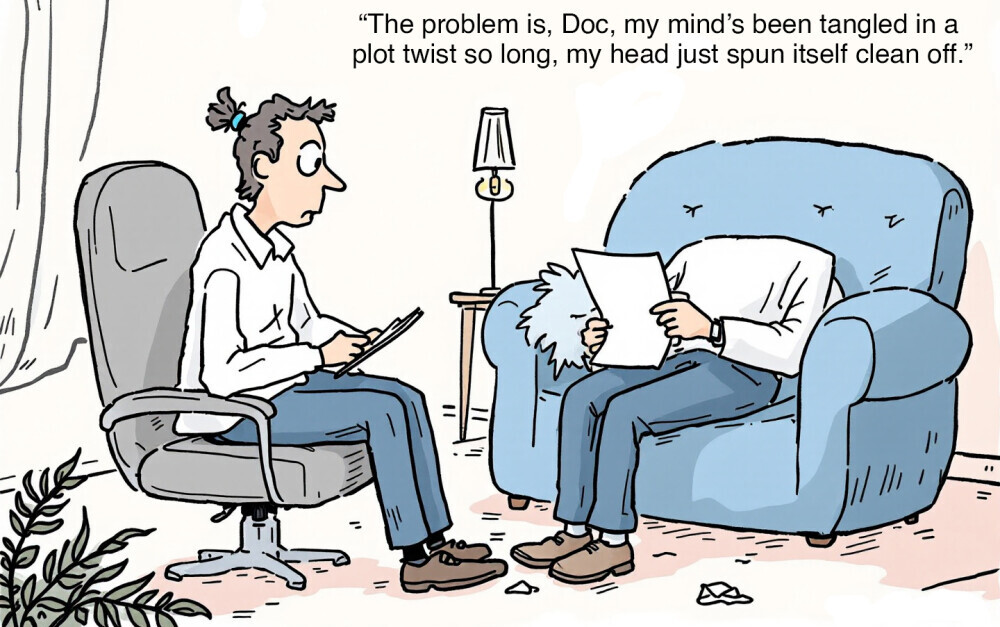Understanding The Psychology Of Consumer Behavior

Getting into consumers’ minds is like unlocking a treasure chest full of insights that can transform marketing strategies. The psychology behind consumer behavior delves into why and how people make buying decisions. It’s a way to grasp the underlying motivations, beliefs, and emotions that push individuals toward certain products or services.
Consumer behavior is often triggered by psychological factors ranging from personal preferences and habits to broader social influences. Understanding why a customer picks up a specific brand over another likely traces back to emotional connections and past experiences that they attribute to a product.
Social proof plays a huge role here. When people see their peers using a product or service, they’re more likely to try it for themselves, generating the kind of collective influence many companies desire to tap into when creating campaigns that feature testimonials, influencer endorsements, or copywritten material.
Brands have become quite adept at pulling psychological levers to nudge consumers toward purchasing content, products, or services. It involves everything from the colors and designs used in packaging to the words and images chosen for advertisements. Each element is carefully selected to spur certain emotions or reactions that align with the brand’s goals.
Exploring the Four Types of Consumer Behavior
Consumer behavior isn’t a one-size-fits-all situation. People tend to operate in one of four ways when making purchasing decisions. Knowing these different types can help copywriters tailor their approaches.
- Complex Buying Behavior: Kicks in when the purchase involves high involvement and comes with significant differences between brands. Think about buying a car or a house; it’s a big deal, and people spend a lot of time and effort in research and comparison.
- Dissonance-Reducing Buying Behavior: Consumers are highly involved but see little difference between brands. They might buy quickly, but often seek reassurance afterward, worried they made the wrong choice; like picking between two similar laptops.
- Habitual Buying Behavior: Consumers in this group buy products out of habit rather than brand loyalty, and tend to make low-involvement decisions, like picking up a familiar toothpaste brand without much thought because it’s always worked for them before.
- Variety-Seeking Buying Behavior: These consumers like to try new things, often switching brands just to shake things up, especially in categories where differences aren’t too significant, like snacks or beverages.
For businesses, understanding these behaviors offers a roadmap for engagement. Knowing your target audience’s behavior type helps you as a copywriter to craft the right message. It’s all about meeting the consumer where they already are in their decision-making process.
The Theory of Consumer Behavior Psychology

Consumer behavior theories provide a structured way to understand and predict buyer actions. These theories draw from psychology, economics, and sociology, offering insights into what drives consumer decisions.
Maslow’s Hierarchy of Needs is a classic example. This theory posits that people are motivated by unmet needs, ranging from basic needs like food and shelter to more complex psychological needs like self-esteem and self-actualization. Copywriters should target these varying levels to connect with their audience on a deeper level.
- Habit Theory explains why consumers might consistently pick the same product without much thought. Habits form because they reduce decision-making efforts and provide a sense of ease and predictability in everyday life.
- Compulsive Buying Behavior is another angle, illustrating how emotional and psychological needs can sometimes lead to irrational purchasing. This is not done out of necessity but to alleviate negative emotions or stress, offering a temporary escape or emotional release.
Recognizing these theories helps copywriters understand the “Why” behind purchases. For example, luxury brands often align their products with Maslow’s higher-level needs, highlighting status and self-esteem. On the other hand, fast-moving consumer goods might leverage Habit Theory to encourage brand loyalty through consistent quality and availability.
Staying aware of these theories isn’t just for academics. Applying this knowledge to create meaningful connections and create a deeper understanding of what makes consumers function allows copywriters to succeed often when integrating these insights into their strategies, tailoring their approach based on the psychological drivers relevant to their audience.
Gaining Insight into Customer Psychology As A Writer
Understanding customer psychology is a game-changer in today’s competitive market. It’s all about stepping into the consumer’s shoes and seeing the world from their perspective. Empathy plays a critical role here; making an effort to truly comprehend what customers want and need can lead to invaluable insights.
One effective technique study customer preferences through active listening. This goes beyond hearing what customers say, but involves interpreting their feedback and reading between the lines to understand their unspoken needs and desires.
Customer feedback is an untapped goldmine for copywriters. Whether through surveys, reviews, or direct interactions, feedback offers clues on where a product or service might fall short or how it could exceed expectations. Using these insights to refine offerings can lead to stronger audience relationships and brand loyalty.
Data and analytics are powerful tools in this endeavor. They can reveal patterns and behaviors that might not be immediately obvious. For instance, tracking purchasing habits over time can highlight changes in consumer interests or the effectiveness of marketing efforts.
Real-world examples of companies that have succeeded in this arena often showcase a keen awareness of customer psychology. By genuinely understanding their audience, they’ve been able to anticipate needs and adapt accordingly, creating products and experiences that resonate deeply with consumers.
Leveraging Consumer Psychology for Success
Using consumer psychology as a foundation, copywriters can craft content that not only attracts but targets engagement to retain customers. A deep understanding of consumer psychology helps designing the marketing campaigns that truly resonate with a target audience.
Personalization is key. By tailoring messages and offerings to fit specific needs and preferences, copywriters can create a unique bond with their customers. Emotional branding also plays a significant role, as it taps into the feelings and sentiments that drive consumer loyalty.
Building long-term loyalty is grounded in an authentic understanding of what consumers care about. By aligning products and services to these core values, copywriters not only meet customer expectations but often exceed them, leading to lasting loyalty and positive word-of-mouth. Staying ahead involves keeping up with current trends, but also anticipating future changes in consumer behavior and preferences.
The future of copywriting will likely see an increasing intertwining between psychology and technology. As digital platforms evolve, they’ll enable more personalized and psychologically informed interactions. Copywriters leveraging this integration will be positioned to thrive, adapting to new dynamics before they become the norm.
The Psychology of How We See Ourselves (Especially as Writers)

As copywriters and authors, how we see ourselves deeply influences what we create. That little voice in your head that says “this isn’t good enough” or “maybe I’m not a real writer”? That’s not just imposter syndrome—it’s rooted in the psychology of self-perception.
At the core of this is what psychologists call our self-concept—the mental image we hold of ourselves. According to humanistic psychologist Carl Rogers, our well-being depends on how closely our real self (who we are) aligns with our ideal self (who we think we should be) (Rogers, 1951). For writers, that ideal self might be a bestselling author, a creative genius, or someone who never runs out of brilliant ideas. But when we feel that gap—when reality doesn’t match the dream—it can spark doubt, anxiety, or even creative paralysis.
There’s also the idea of self-schemas—mental filters we’ve built over time that shape how we interpret things about ourselves (Markus, 1977). If you’ve ever told yourself “I’m just not a strong storyteller” or “I can’t write dialogue,” you might be seeing your work through a limiting self-schema. The tricky part? These beliefs often form early and become so familiar, we treat them as fact.
Another is social comparison. As Leon Festinger explained in his Social Comparison Theory (1954), we naturally evaluate ourselves by comparing our abilities and achievements to others. In the world of writing, this might mean scrolling through LinkedIn or Substack and feeling behind because someone else got a book deal, landed a dream client, or just published another viral piece. While comparison can sometimes motivate us, it more often leaves creatives feeling like they’re falling short.
Finally, self-esteem plays a huge role in our creative expression. Abraham Maslow put it near the top of his hierarchy of needs—right after belonging. When we doubt our value or our voice, we’re less likely to take creative risks or trust our instincts.
Understanding these psychological factors doesn’t just help us feel better—it can actively improve our writing. When you recognize how your self-image affects your creative output, you’re more equipped to break free from mental blocks, reframe your thinking, and write with confidence.
Here’s the twist: the same psychology that shapes how we see ourselves also shapes how readers and consumers see everything else—from our words to the products we promote as copywriters and authors.
Just as we bring our own self-perceptions to the writing table, consumers bring theirs to every buying decision. Understanding their internal dialogue—the fears, desires, identities they’re trying to affirm or escape—unlocks the ability to write not just persuasively, but powerfully.
In fact, many of the same psychological principles that impact our self-image—like social comparison, identity alignment, and emotional resonance—drive consumer behavior too. People don’t just buy products; they buy stories that align with who they believe they are, or who they aspire to be. Every copywriter and author should put these principles of psychology into practice to hone their craft in becoming a better writer, especially in today’s advanced technicalogical landscape where writing tools are readily available, but psychology plays an even greater factor worth exploring to enhance our abilities for storytelling.
Sources:
- Rogers, C. R. (1951). Client-Centered Therapy. Houghton Mifflin.
- Markus, H. (1977). “Self-schemata and processing information about the self.” Journal of Personality and Social Psychology, 35(2), 63–78.
- Festinger, L. (1954). “A Theory of Social Comparison Processes.” Human Relations, 7(2), 117–140.
- Maslow, A. H. (1943). “A Theory of Human Motivation.” Psychological Review, 50(4), 370–396.







This was such a fascinating read! I’ve always been curious about what actually drives us to choose one product over another, and this really breaks it down in a relatable way. The section on social proof really hit home—it’s wild how much we’re influenced by what others are doing, even without realizing it. Also, the four types of consumer behavior? Super helpful! I can totally see myself bouncing between habitual and variety-seeking depending on the product. Thanks for shedding light on this—it’s a game-changer for anyone trying to understand or improve their marketing strategy!
This article honestly connected so many dots for me. As a psychology student exploring the world of sales and marketing, I find it fascinating how deeply human behavior, emotion, and identity influence what we buy. I appreciated how you broke down not just the theories—like Maslow or Habit Theory—but also how they show up in real campaigns and consumer decisions.
The part about emotional branding and understanding customers’ self-concept really stood out. It’s easy to focus on strategy and forget that buying is such a personal experience. This reinforced the idea that good marketing starts with empathy and insight, not just a clever slogan.
Also loved the tie-in with self-perception for writers—it’s a powerful reminder that how we see ourselves shapes not just our creativity, but how we connect with others. Thanks for this! Definitely bookmarking it.
This article effectively introduces the core concepts of consumer behavior psychology. It highlights the importance of understanding the “why” behind purchasing decisions, emphasizing the role of emotions, past experiences, and social proof. The discussion of how brands strategically use psychological levers in marketing, from color choices to ad copy, is insightful.
The breakdown of the four types of consumer behavior – complex, dissonance-reducing, habitual, and variety-seeking – provides a useful framework for marketers and copywriters. Recognizing these different decision-making processes allows for more targeted and effective communication strategies. Understanding these nuances is crucial for crafting compelling copy that resonates with specific consumer segments and ultimately drives sales.
Phil
Hello Ricky!
Thank you for your insightful article on understanding the psychology of consumer behavior as a copywriter. Your breakdown of the four types of consumer behavior—complex, dissonance-reducing, habitual, and variety-seeking—provides a practical framework for tailoring copy to different audience mindsets.
I particularly appreciated your discussion on the role of social proof and emotional connections in influencing purchasing decisions. It’s fascinating how elements like testimonials and influencer endorsements can tap into our innate desire to belong and trust others’ experiences. Your explanation of consumer behavior theories, such as Maslow’s Hierarchy of Needs and Habit Theory, offers valuable insights into the motivations behind consumer choices. Understanding these psychological drivers is crucial for crafting compelling and effective copy.
Thank you for sharing these valuable insights. They serve as a valuable guide for anyone looking to deepen their understanding of consumer psychology in the realm of copywriting.
Angela M 🙂